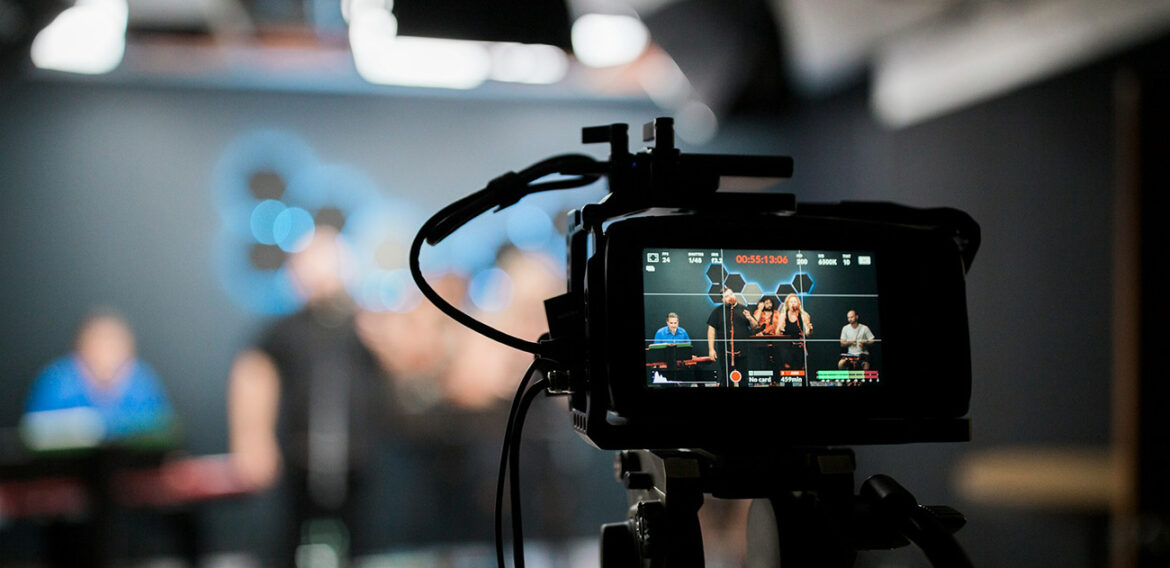Alright, let’s talk about the beating heart of any self-respecting streamer’s setup: the camera. It’s not just about having a picture on screen; it’s about engaging your audience, conveying emotion, and ensuring your content looks as sharp as your gameplay. I’ve spent years tinkering with hardware and pushing gear to its limits, so trust me, choosing the right camera for your stream is paramount. It’s the visual handshake you offer your viewers, and it needs to be a firm one.
Why Your Camera Matters More Than You Think
In today’s bustling digital landscape, where millions are broadcasting on platforms like Twitch, YouTube, and Facebook Live, simply having a camera isn’t enough. A high-quality camera is crucial for engaging your audience and delivering professional-looking content. It’s about ensuring your viewers can truly connect with you, whether you’re showing your live reactions, performing physical work, or just chatting. After all, as one streamer rightly put it, showing your face on stream is vital for avoiding a “disconnect” in the viewing experience.
Essential Camera Criteria for Streaming
Before we dive into specific models, let’s nail down the non-negotiables for any camera you’re considering for live streaming. If a camera doesn’t meet these four fundamental criteria, it’s simply not fit for purpose:
- Clean HDMI Out
To stream from a dedicated camera, you need to capture a signal without any of the camera’s user interface (UI) elements, like battery life indicators or exposure settings, visible on the output. - Power Supply / AC Adapter-Ready
Live streams can run for hours, and internal batteries typically last only about 20 minutes. You’ll absolutely need an option for an AC power adapter to ensure uninterrupted streaming. - Unlimited Runtime
Some cameras, particularly DSLRs, automatically shut off after about 30 minutes. For longer streams, this is unacceptable—ensure there’s a way to disable it. - No Overheating
Prolonged operation, especially when powered via USB, can cause overheating. Research a camera’s thermal performance before buying.
Note: Webcams are generally streaming-ready and meet these essentials by default.
Beyond the Essentials: Key Considerations
- Output Resolution
Minimum: 720p. Recommended: 1080p. 4K is only worth it if your viewers are on 4K devices and your system can handle it. - Frame Rate
30fps is fine for static content, but for fast-paced streams, aim for 60fps or higher. - Autofocus Performance
Fast, accurate, and quiet autofocus is critical. Canon’s Dual Pixel CMOS AF II is an excellent example. - Audio Pathway
If routing audio through the camera, ensure it supports real-time HDMI or SDI audio passthrough. - Connector Type
HDMI is common (micro/mini/full-size). SDI offers more secure, longer cable runs for professional setups. - Simultaneous Streaming and Recording
Choose a camera that allows internal recording while outputting a live feed. - Rotating Display (Flip Screen)
Vital for solo streamers. Helps with framing and focus. - Portability
For mobile streaming, consider battery life, size, and grip ergonomics.
Connecting Your Camera for Streaming: The Capture Card Conundrum
You can’t just plug a camera into your computer’s HDMI port—it’s an output, not an input. Instead, use a capture card, such as:
- Elgato Cam Link
- NearStream CCD30 – supports 4K60fps with HDR, near-zero latency
- Epiphan Pearl systems – capture, stream, and record without a PC
Types of Cameras for Streaming
Smartphones
With apps like Camo, DroidCam, or VDO.Ninja, your phone becomes a decent webcam. Pros: convenience and portability. Cons: long-term wear-and-tear.
Webcams
Plug-and-play, affordable, and beginner-friendly. Top models:
- Logitech C922 Pro HD Stream Webcam
- Logitech BRIO Webcam
- Microsoft Lifecam Studio
DSLR and Mirrorless Cameras
Offer large sensors, cinematic depth of field, and superb image quality. Popular choices:
- Panasonic Lumix GH5 II
- Sony ZV-E10 II
- Canon PowerShot V1
- Sony ZV-1 II
- Canon EOS M200
- Sony Alpha a5100 / a6400
Downside: They’re pricier and often require capture cards.
Camcorders
Great for long sessions. Affordable to pro-tier examples include:
- Canon Vixia HF R800
- Panasonic HC-V180K
- Panasonic HC-V770
- Canon XA11
- Panasonic AG-UX180
- Canon XF400
Some models offer built-in streaming via Ethernet/Wi-Fi.
PTZ (Pan, Tilt, Zoom) Cameras
Great for large venues and remote operation. Example: Sony BRC X400.
Cinema Cameras
Top-tier image quality for pro production. Example: Canon EOS C70. Expect prices upwards of £5,500 for the body.
The Unsung Hero: Lighting
Even the best camera will look bad with poor lighting. Tips:
- Use a key light (angled from above and to the side).
- Add fill lights to soften shadows.
- Background lights (e.g., LED strips) add personality.
Budget options: ring lights.
Advanced: Neewer GL1C LED panels with adjustable colour temp (4500–4700K for natural tone).
Essential Accessories
- Tripods and Mounts
For stability and proper framing. - External Microphones
USB mics (e.g., Blue Yeti) are great for starters.
XLR mics (e.g., Shure SM7B) offer pro-level audio. - Audio Mixers
Useful for mixing game, music, and mic audio. Hardware options like GoXLR offer tactile controls. - Capture Cards
Required for DSLRs and consoles. Examples: Elgato Cam Link, NearStream CCD30. - Green Screens
Enables virtual backgrounds. Needs even lighting and contrast with clothing.
My Recommendation: A Balanced Approach to Quality
- Prioritise Audio and Lighting
These affect stream quality more than a fancy camera. A solid USB mic + controllable light = massive improvement. - Start Smart with Your Camera
Use a smartphone (with Camo or DroidCam), or a webcam like the Logitech C922 or BRIO. - Plan for the Upgrade Path
Once your lighting/audio are sorted and you’re ready, move to a mirrorless or DSLR. That’s when a better camera truly shines.
Ultimately, the best camera for streaming is the one that fits your needs and helps you connect with your audience. Start simple. Optimize what you have. Upgrade as you grow. It’s a marathon, not a sprint.
